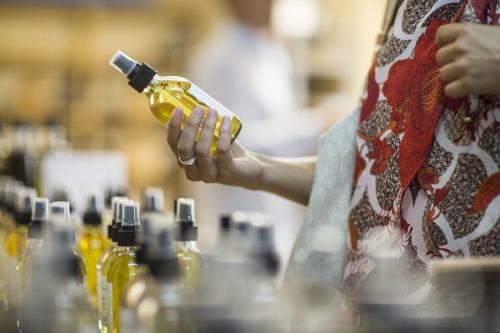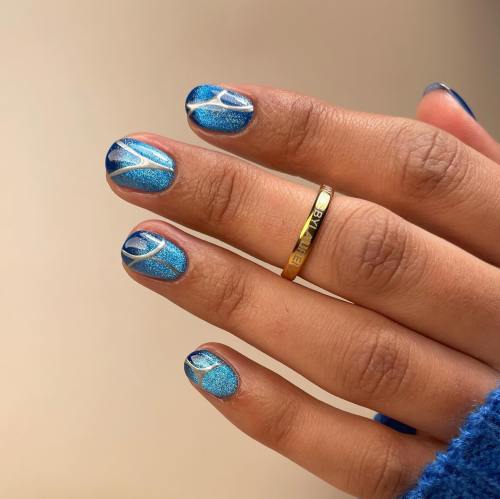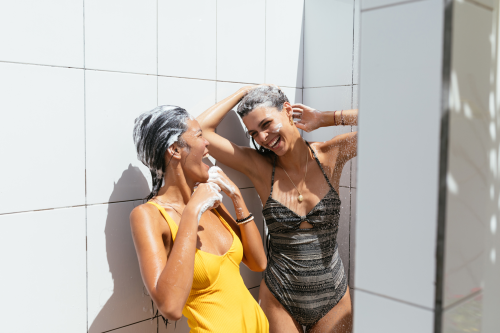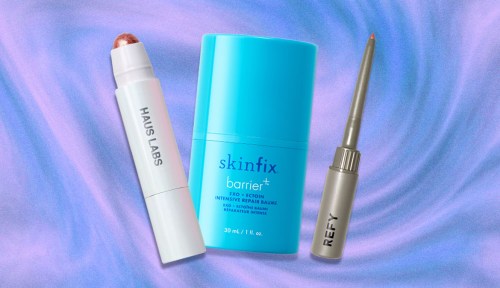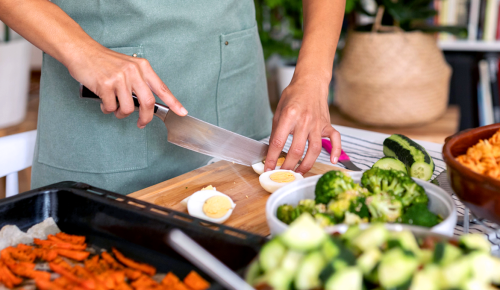Confession: I don’t wear perfume. In part, this is because I grew up with a mom whose heady fragrances from ’80s and ’90s left me with a headache, and in part, it’s because I’m a hippie who naively thinks people (read: those I want to be attracted to me) will be more turned on by my natural scent than anything from a bottle. (Spoiler alert: I’m still single.) Still, I love cologne on a man—especially the way it lingers after a makeout sesh or on a borrowed shirt. If you think about it, that kind of disproves my theory around the allure of going au naturel.
And so, to educate myself about all things fragrance, including how best to apply a spritz, I tapped Stephen Nilsen, the Givaudan perfumer responsible for scents such as Calvin Klein Dark Obsession and Drew Barrymore Flower: Pretty Deadly Collection, among others. He’s as romantic in spirit as I would imagine a perfumer to be, as evidenced by his initial description of how fragrances are concocted. “How is a fragrance built? How is a building built? Where does love come from? How do people dream?,” he responds. Every fragrance is “a journey,” which can start with the perfumer being inspired by a new place or smell or distilled “natural” (aka plant) or by a sunset or a piece of art.
Nilsen isn’t just a pro at mixing some of the most popular bottles of fragrance out there, he’s also got many hacks up his sleeve about how to make them stick with you and which ones to look for when shopping for a scent. Five of the best tips for picking out a fragrance, straight from the master himself, are just a scroll away.
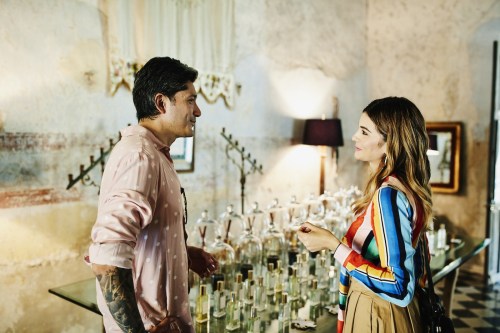
Photo: Getty/Thomas Barwick
5 things perfumer Stephen Nilsen thinks you should know about the art of perfumery.
1. What to know about the different “eaus”: Fragrances come in different concentrations. Products labeled as “body splash” feature the lowest fragrance percentage, which can be anywhere from about one to five percent. Next up is “eau de cologne,” which will have a concentration of anywhere from five to ten percent. “Eau de toilette,” meanwhile, is about 10 to 15 percent, and an “eau de parfum” is anything above that, generally about 15 percent. “As you concentrate the oils, you get more impact, and the fragrance is typically longer-lasting on the skin,” Nilsen says. “So, I recommend that everybody find what works with their body.” That said, if you’re looking for a stronger scent, go with an eau de parfum versus an eau de cologne.
2. Natural fragrances don’t last as long as synthetics: If you’re looking for a long-lasting fragrance, you might want to look for synthetics (yes, they can still be phthalate-free if you’re looking for a clean option). “The reason is that a lot of natural fragrances use essential oils, and an essential oil is the oil that’s taken out of a plant material through steam distillation,” he explains. “It’s literally the most volatile part, so that kind of thing isn’t going to last a long time on your skin.” With that said, he explains that a lot of his natural fragrance clients use this to their advantage by dispensing their product via rollerball applicators which encourage ritualistic reapplication. “The whole point is that you should enjoy reapplying.” (Essential oil rollerballs are oddly comforting, no?)
3. How strong a scent is depends a great deal on how you apply it: Nilsen likens this phenomenon to the wake of a boat, and says that trail preferences are super personal. “Back in the ’80s, some of those fragrances were so powerful they could open the door for you,” he says. “What we’ve come to realize now is that people typically don’t want fragrances that are so strong.” You can adjust your trail by applying more or less of the fragrance, but also by consciously selecting an application spot. Perfumer Marie Salamagne says that a spritz on your body will leave less of a trail than will a spritz on the clothes or hair.
4. There are many right—and one wrong—ways to apply a fragrance: First of all, Nilsen says he recommends five sprays for a fine fragrance, which seems like a lot to me, but then again, he’s the expert. Where a fragrance is applied is personal and cultural, he explains, noting that some people prefer to spritz their hair, others their neck, maybe a scarf, and even behind the knees.
“There’s ‘the Z’, where people spray one shoulder, the other shoulder, then their left hip and then their right hip,” he says. “Then we have ‘the cotton candy’, where they spray and then swirl the fragrance bottle around their head, like they’re making cotton candy.” And so on. All these approaches are “right,” but there is one he considers to be wrong. “When people spray it in the air and walk into it, it really just dilutes the fragrance,” he explains. “You’re spraying $500, into the air and missing a lot of it on your body.”
5. Want a fragrance that will make you and your partner feel a certain kinda way? Try this technique for finding it: Nilsen tells me that since it’s tough for people to verbally express their reaction to a fragrance, his team has utilized body language experts as translators. “Instead of listening to the consumer, we actually watched her, ” he explains. “We gave her these new, delicious notes to see how she responded, and what we found is that there were certain archetypes of behaviors that will be manifested based on what is smelled.”
Hair touching, he says, signifies a sensual note. Meanwhile, if you look down and to the side, that’s a sign you’re remembering your past. Some subjects even swallowed because the fragrance had made them salivate. “Nobody’s going to say to you, ‘This is really making me feel sensual’ or ‘I’m salivating,'” Nilsen says. “[This approach] allows us to capture these fundamental reactions people have when they smell a fragrance.” While you may not have a body language expert at your disposal, you can have someone watch you for tells as you test out different scents or, if it’s your partner you’re wanting to please, you can do the same for them.
Speaking of feeling sensual, this particular fragrance really got a Well+Good writer revved up. To engender calm instead, try this scent.
Sign Up for Our Daily Newsletter
Get all the latest in wellness, trends, food, fitness, beauty, and more delivered right to your inbox.
Got it, you've been added to our email list.
